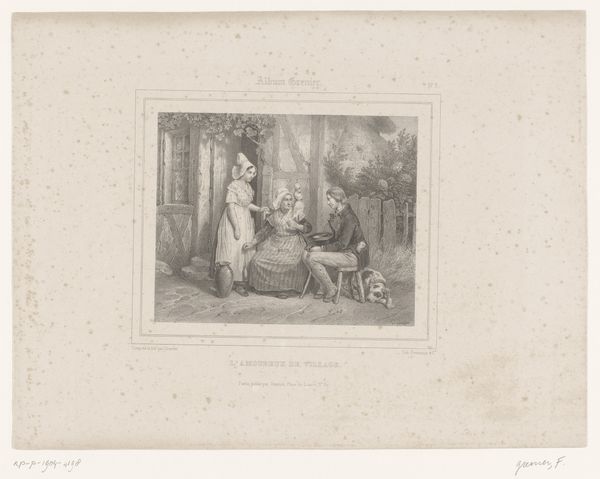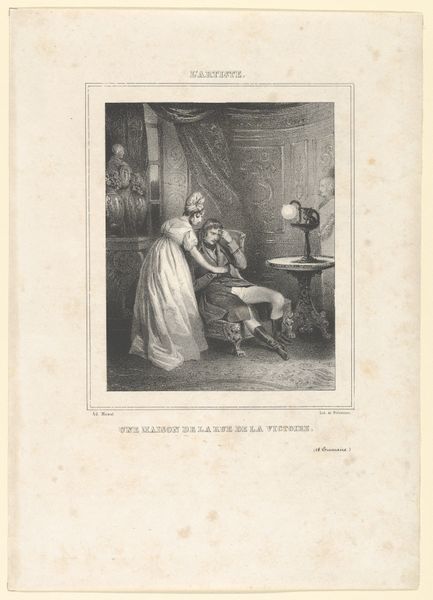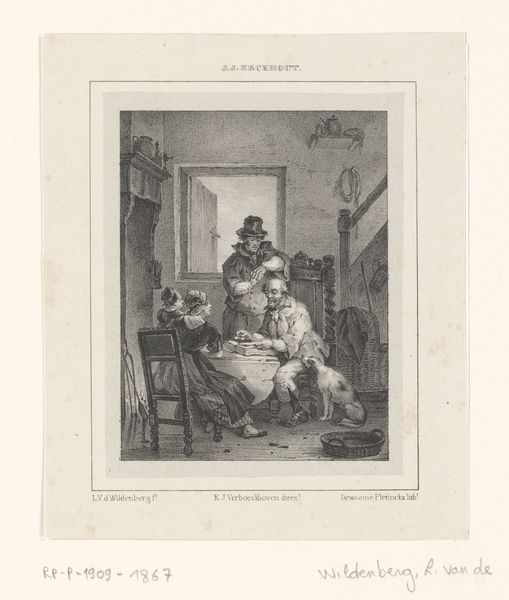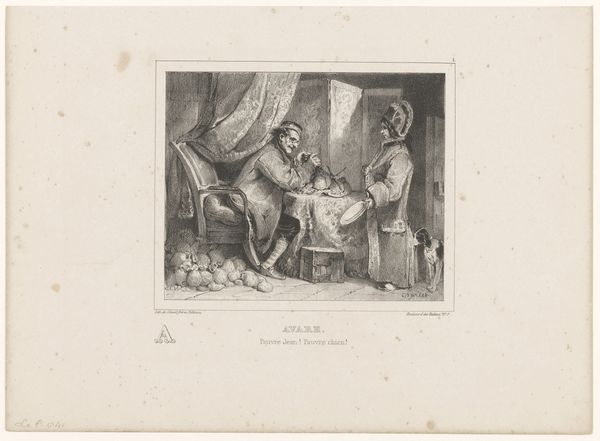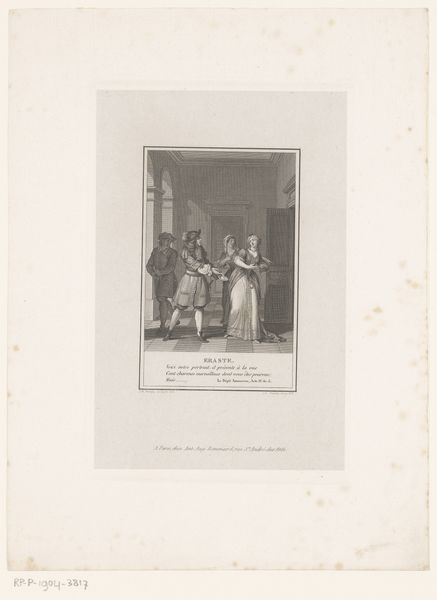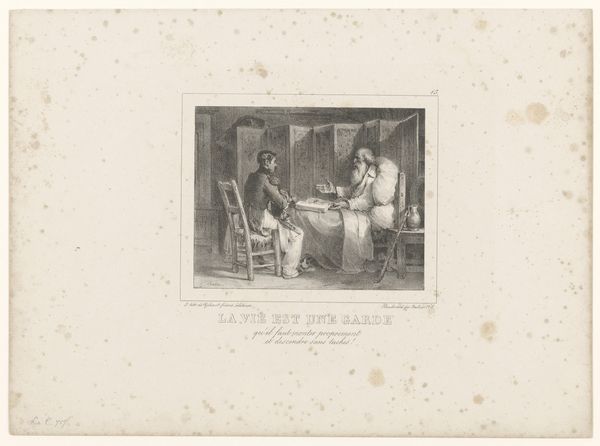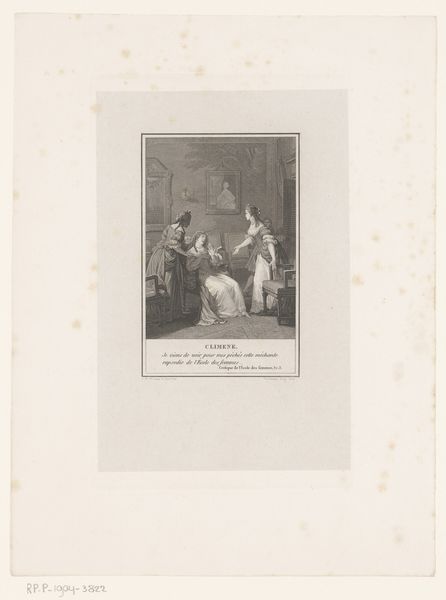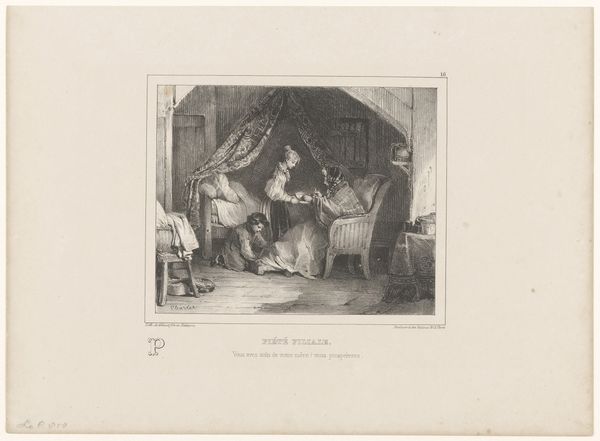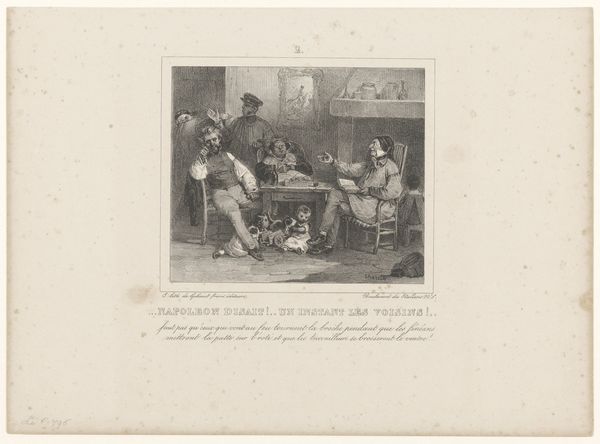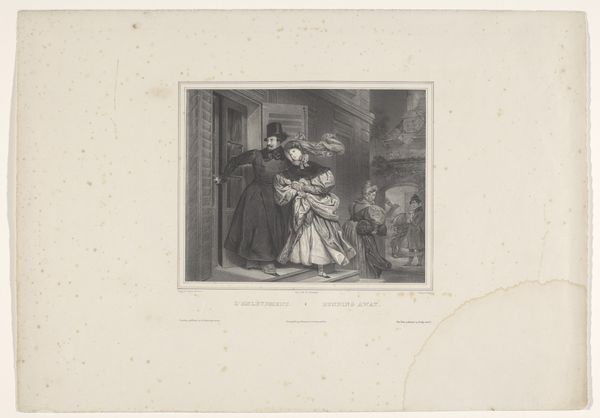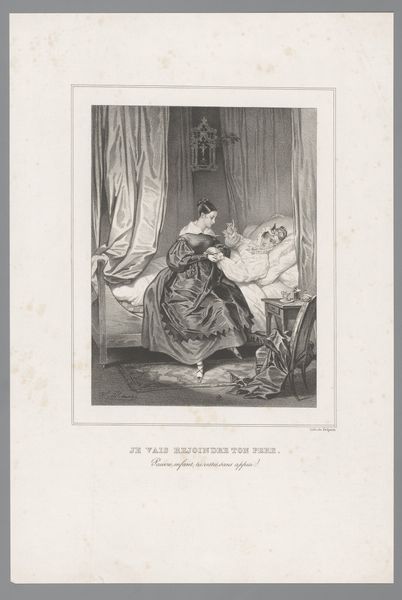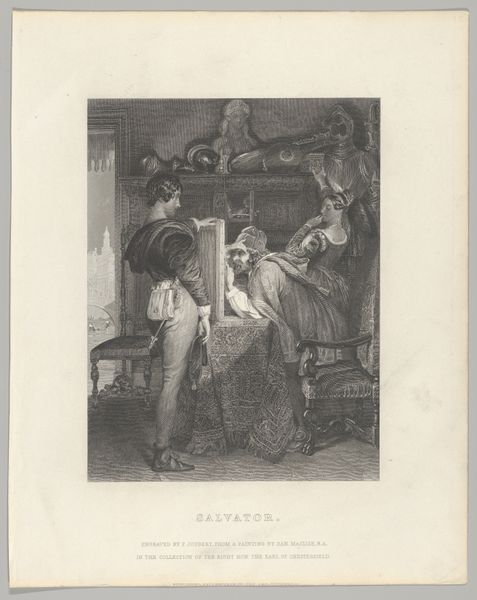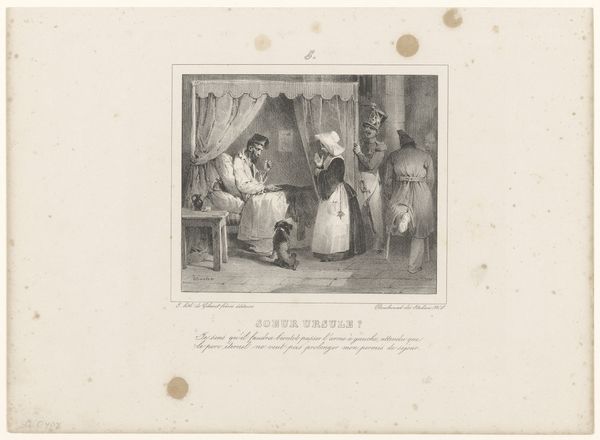
drawing, print, engraving
#
portrait
#
drawing
#
narrative-art
# print
#
figuration
#
romanticism
#
genre-painting
#
engraving
Dimensions: height 247 mm, width 338 mm
Copyright: Rijks Museum: Open Domain
Editor: This print, titled "Midwife shows a father his newborn child" by Nicolas Toussaint Charlet from 1836, portrays such a tender moment in what appears to be a modest home setting. There’s so much raw emotion packed into this genre scene! What historical context should we keep in mind when viewing this? Curator: Well, remember that in 1836, we're looking at a society undergoing significant shifts. Consider the burgeoning middle class and its impact on artistic subject matter. Scenes of domestic life, like this one, became increasingly popular. How does that relate to the "public role" of art, would you say? Editor: I suppose it suggests that art was becoming more about everyday life for ordinary people, instead of just glorifying the elite? Curator: Precisely! And consider the political undertones. Charlet was known for his Bonapartism. Might there be a subtle commentary on family and legacy embedded here, a romanticized notion of societal continuation and paternal duty within the context of post-Napoleonic France? Look closely. What details support such an interpretation? Editor: Maybe the focus on the father, his obvious emotion, could be seen as a statement about the importance of family in rebuilding society after the Napoleonic era? It’s interesting that Charlet chose such an intimate moment. Curator: Exactly! Think about the role of reproductive imagery throughout history and how it aligns (or doesn't) with prevalent political and social narratives. Art shapes, and is shaped by, public opinion, whether intentionally or not. It becomes, inevitably, an archive of its contemporary concerns. Editor: I hadn’t considered that it was trying to say something about society at large, and not only about an emotional family moment. This changes my perception about genre paintings in general. Curator: Indeed. These snapshots of everyday life often contain layers of meaning that reflect broader social and political currents.
Comments
No comments
Be the first to comment and join the conversation on the ultimate creative platform.
